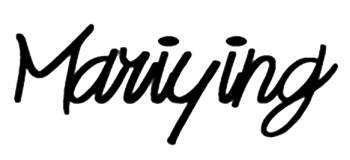Crafting a Unique Journal Cover: Embellishment Techniques to Make It Truly Yours
If you're someone who sees your journal as more than just a collection of pages—maybe it’s an extension of your personality or even a piece of art—then let’s talk about how to make it uniquely yours. Personalizing a journal cover isn’t just about decoration; it’s about creating something that resonates with you every time you open it. Here’s how you can add character and charm, whether you’re going for subtle elegance or something with a bit more flair.
1. Fabric Embellishments: Textures That Speak
Using fabric as the main material for your journal cover is a great start, but let’s take it a step further. Think beyond a single solid cloth—why not add layers of texture and pattern? Here are a few ideas:
- Appliqué and Embroidery: Stitch on a meaningful word, your initials, or a small symbol that represents something special to you. If you’re a traveler, maybe embroider a tiny map outline. If you love plants, add a stitched leaf or flower. Appliqué, which involves sewing one piece of fabric onto another, also adds a beautiful dimension.
- Patchwork or Mixed Fabrics: Use remnants of different fabrics and layer them in patches. Don’t worry if the edges are rough; sometimes, the imperfections add character. Try combining denim with softer cottons or canvas for a contrasting look.
After placing your embellishments, consider using a rolling pin or a wooden handle roller to smooth out wrinkles and air bubbles, securing each piece without distorting the fabric.
2. Vintage and Repurposed Materials: Add a Story
One way to make a journal deeply personal is to integrate items that hold meaning for you. For instance:
- Buttons, Zippers, and Snaps: Old buttons from a family coat or a zipper from a worn-out bag can be reused creatively. Attach them to the cover for a tactile, three-dimensional effect.
- Handmade Stamps: If you’re comfortable carving stamps from materials like linoleum blocks or even potatoes, try stamping a design onto your fabric cover using fabric paint. Each stamp will add a layer of uniqueness, and if it’s imperfect, all the better—it shows the human touch.
Consider combining fabric with these elements in layers, using fabric glue to adhere items firmly. Once the glue is applied, press them gently with a heavy book or flat object to ensure a secure bond.
3. Natural Additions: Rustic Touches
For those who want an organic, earthy feel, look to nature for inspiration. Think of dried flowers, leaves, or pressed herbs. These elements can be used in unique ways to give a natural aesthetic.
- Pressed Flowers or Leaves: Using a clear vinyl cover, you can encase delicate, pressed leaves or flowers over the journal. This not only preserves them but also adds an elegant, natural vibe. Make sure to press them for at least two weeks in advance, so they’re flat and preserved.
- Twine and Leather Wraps: Wrapping your journal in twine, leather strips, or even macrame-style cords adds a touch of rustic charm. You can create a loop for holding pens or pencils, too, making the wrap functional as well as decorative.
4. Functional Add-Ons: Creativity Meets Utility
Not all embellishments need to be purely decorative; sometimes, adding practical elements enhances your journaling experience.
- Pockets and Holders: Sew on a small pocket to the inner front cover or add a fabric strap on the back to hold a few small notes or stickers. A pocket from an old shirt can make a great holder for pens, giving your journal an upcycled touch.
- Tabs and Labels: Fabric tabs or sewn-on labels along the edge of the journal can mark sections or favorite pages. Use materials like denim, ribbon, or twill tape to add tabs, sewing them to the edge with a strong, straight stitch for durability.
5. Artistic Paint Effects: For the Brave and Bold
If you enjoy a pop of color, fabric paint or ink stamps can completely transform your cover. Using textile paint, brush on some abstract shapes, geometric designs, or even your own freehand illustrations. If painting feels intimidating, start small. You could paint just the edges or add a border around the cover.
For an aged, distressed effect, lightly sandpaper parts of the fabric after painting. This technique works especially well on thicker materials like canvas, and it gives a time-worn, vintage aesthetic.
Tips to Make It All Last
When embellishing, think about durability. Fabric glue and stitching are your best friends here, but sometimes it’s also about knowing when to stop. Each element should complement the others, creating a balanced composition without overloading the cover. Let it reflect your style, and remember—it’s not about perfection. Sometimes, the quirks make it feel uniquely yours.
In the end, making a journal that resonates with you is all about infusing it with personality and intention. Take your time, enjoy the process, and make it something you’ll want to reach for daily. Your journal is more than just a book; it’s a piece of art that will grow richer with every entry you add.
